Use these tactics
Let’s explore these tactics with an example: Pip’s Cafe
The manager at Pip’s Cafe is overwhelmed with staff coordination, inventory management, and customer satisfaction, unsure which duties to prioritise. See below how Pip’s Cafe Manager uses these tactics to solve their problem.
1
Use Sphere of Influence to identify what you can control
Use Sphere of Influence to identify what you can control
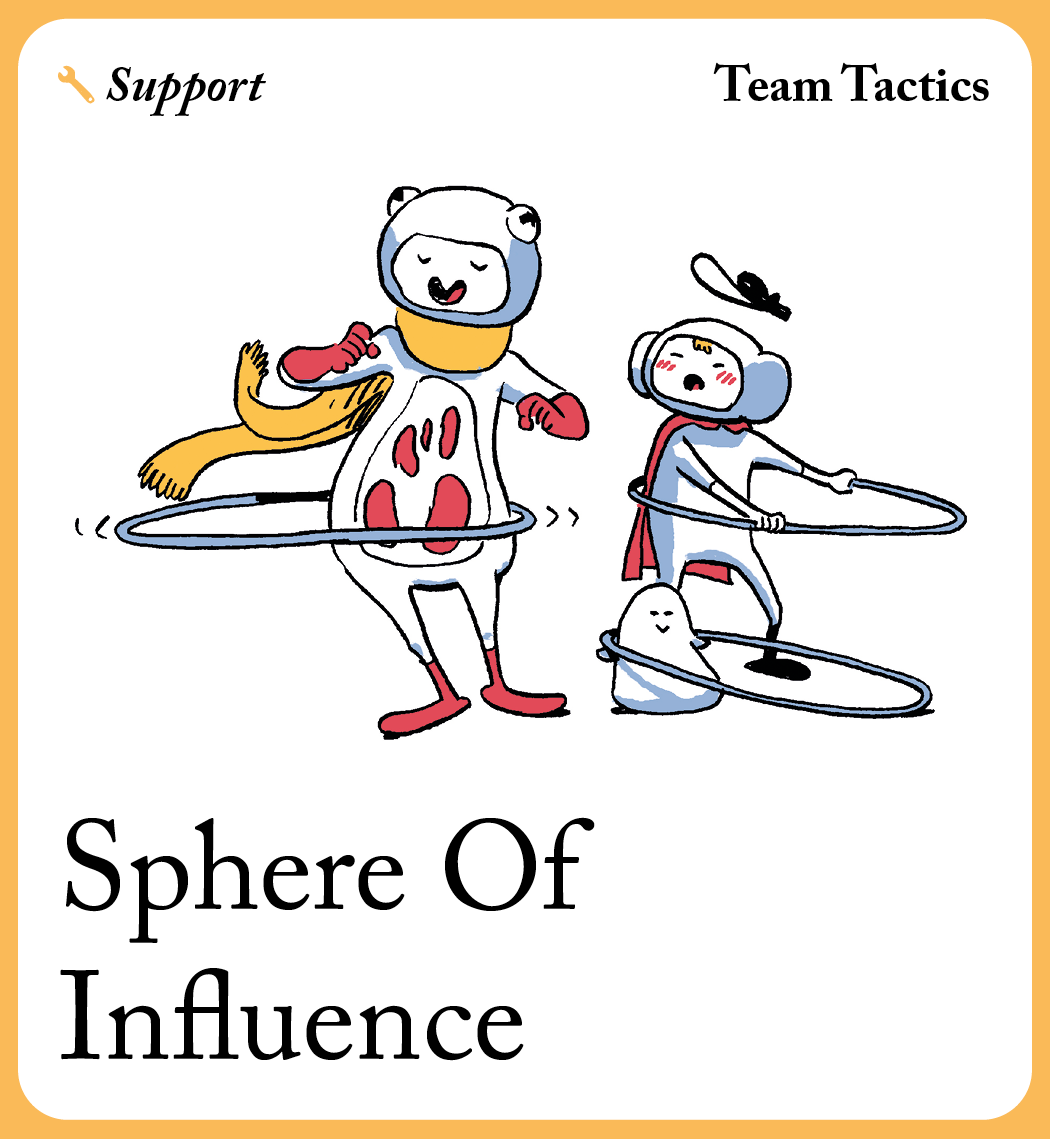
👤 Who is needed? Just you
🧠 What’s the goal? Focus your energy and attention where it counts.
👀 Why is this important? Highlight the things that you can influence. As you focus on the things within your sphere of influence, it will expand.
“I am not a product of my circumstances. I am a product of my decisions.” – Dr Stephen R Covey
💡 Tip: make sure that you understand definitions of concern, influence and control before you start. Concern is what you care about but cannot directly change. Control is what you can directly alter. Influence is where you can sway outcomes, though not directly control them.
Instructions
-
Draw three concentric circles and label them from the outside: Concern, Influence and Control.
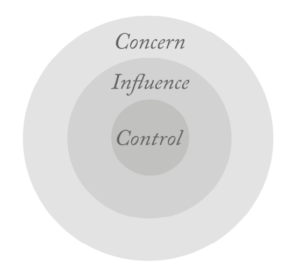
Circle of Concern – a range of worries that we cannot yet do anything about
Circle of Influence – the worries we can indirectly do something about
Circle of Control – the worries we can directly do something about
-
Choose a topic to focus on, such as a problem or opportunity. It can be related to yourself, team or organisation-wide. Write it at the top of the circles. Example: Improving cafe operations
-
Individually, write down the all your concerns about this topic, one per sticky note, then add them to the Concern circle (Theme Sort as you go).
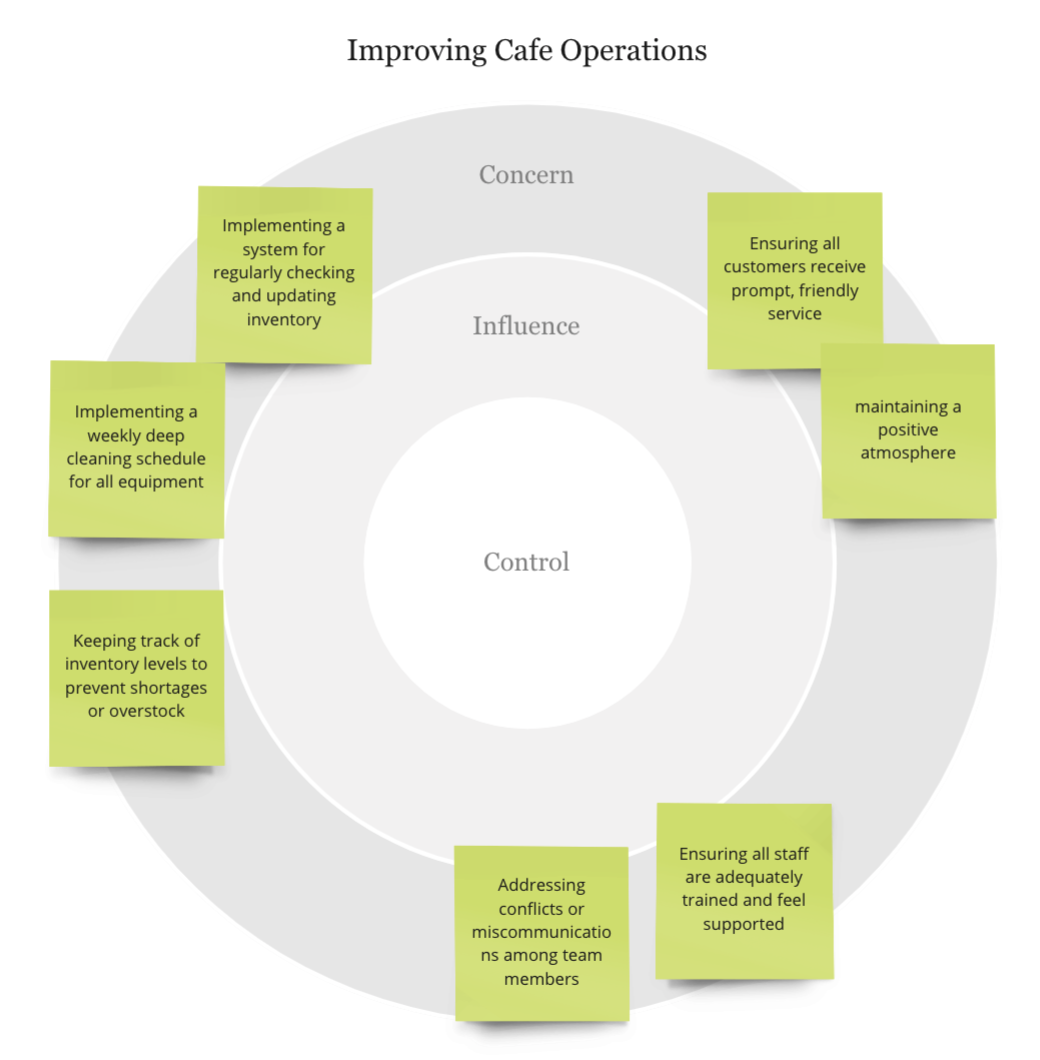
-
Discuss each theme and ask: Can I influence this? If so, move it to Influence. Do I control this? If so, move it to Control.
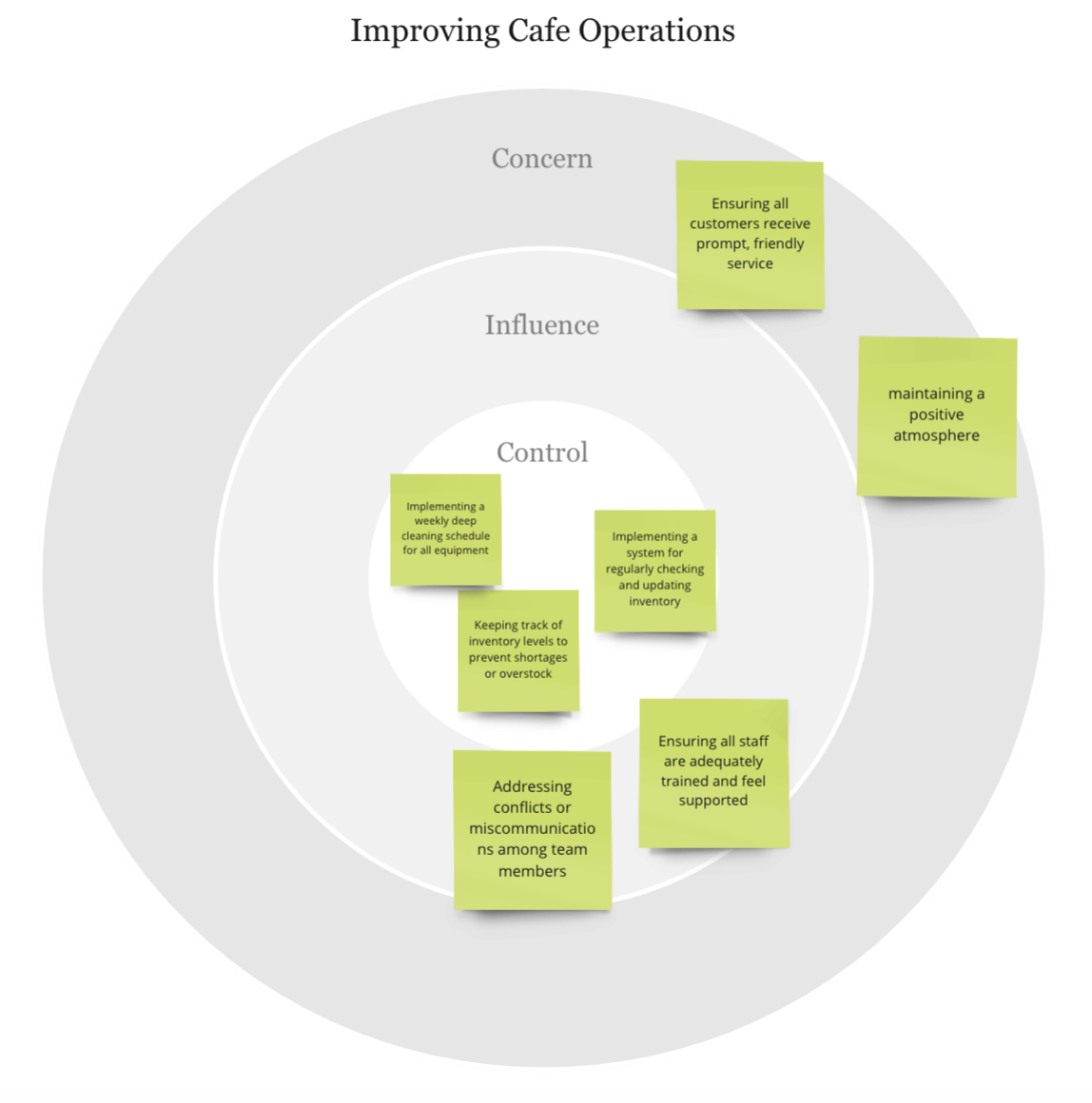
-
Choose a theme within Control to focus on for the next week. Monitor items of Concern, but don’t waste energy trying to change them.
⬇️ In the next tactic, use all of your worries in the Control and Influence sections with the Impact Effort Map.
2
Use Impact Effort Map to prioritise impactful, low-effort actions
Use Impact Effort Map to prioritise impactful, low-effort actions
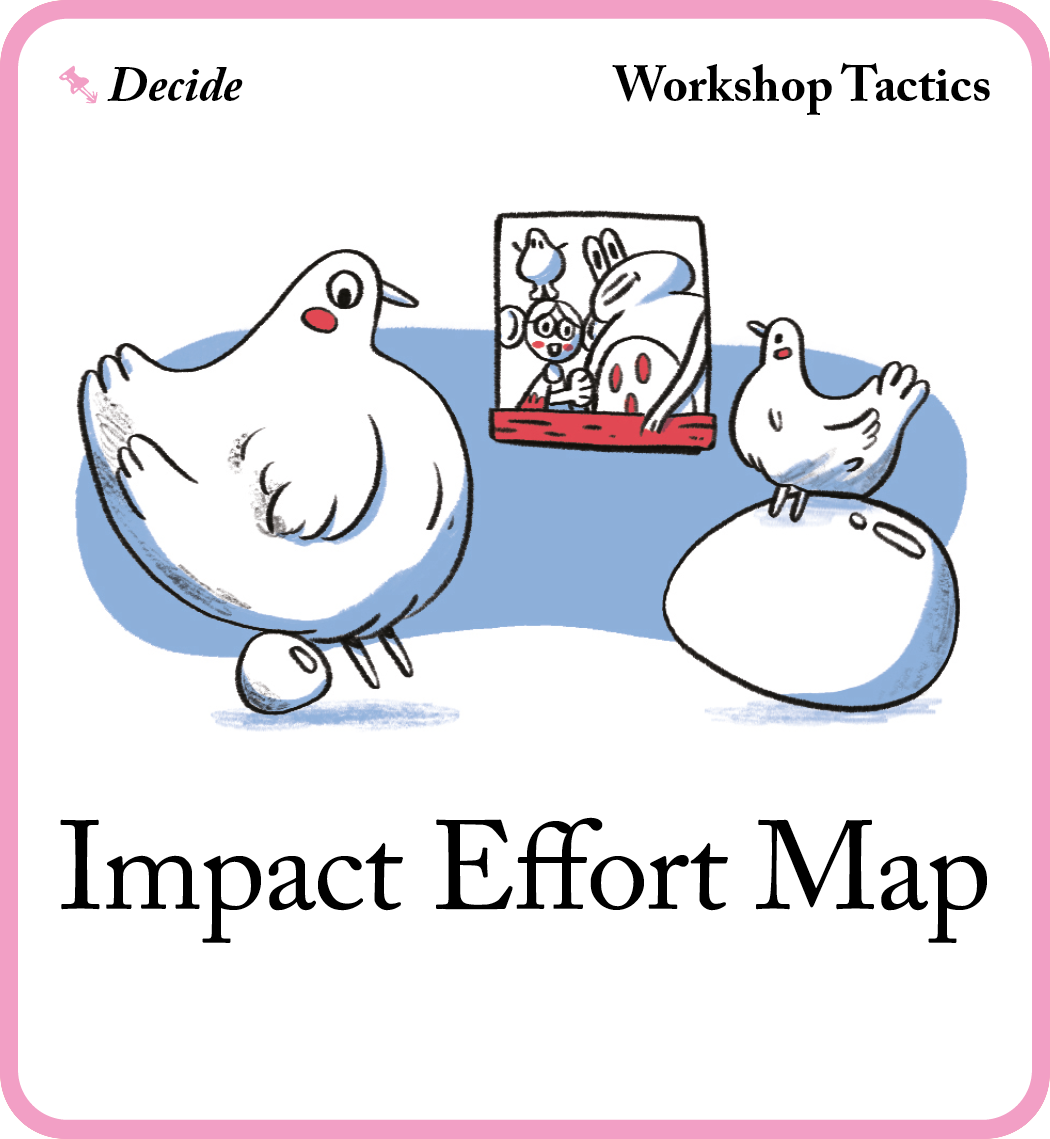
👤 Who is needed? Just you
🧠 What’s the goal? Group together ideas by how much effort they require to carry out, and by how much impact they’ll have on your goal.
👀 Why is this important? Narrowing down your ideas means that you can focus on what is going to be the easiest and most valuable thing to work on.
💡 Tip: remember as you learn and develop the placement of tasks might change over time.
Instructions
-
Plot each idea on the graph. Decide how much effort is involved and what the impact will be.
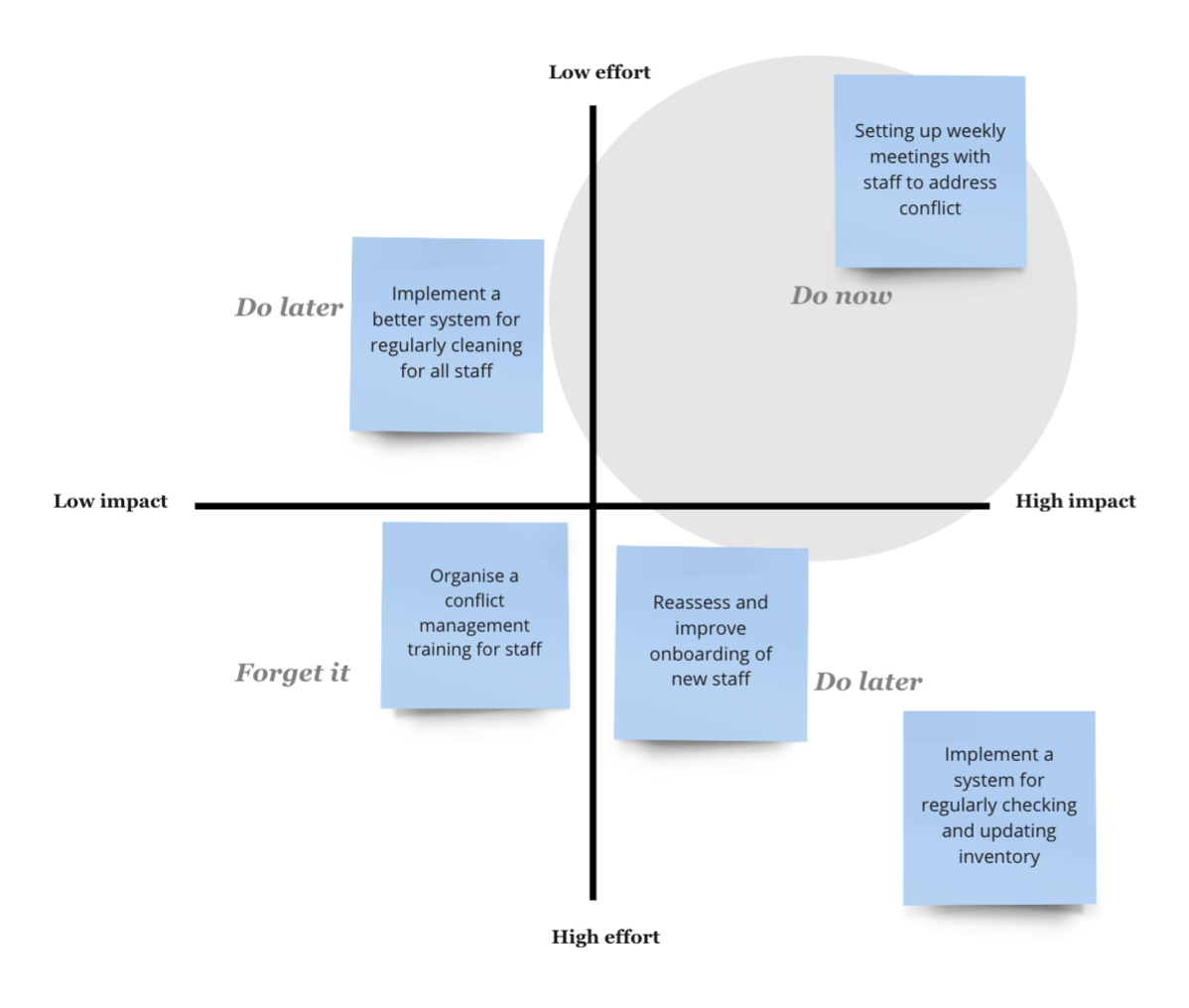
-
Use Sticky Steps to plan how you’ll action the ideas in Do now. Create commitment to those actions with Who, What, When…
⬇️ In the next tactic, take any sticky notes from the ‘Forget it’ section, along with your worries in the concern section in the first tactic, to be used in Kill it with Fire.
3
Use Kill It with Fire to clear space by reassessing tasks
Use Kill It with Fire to clear space by reassessing tasks
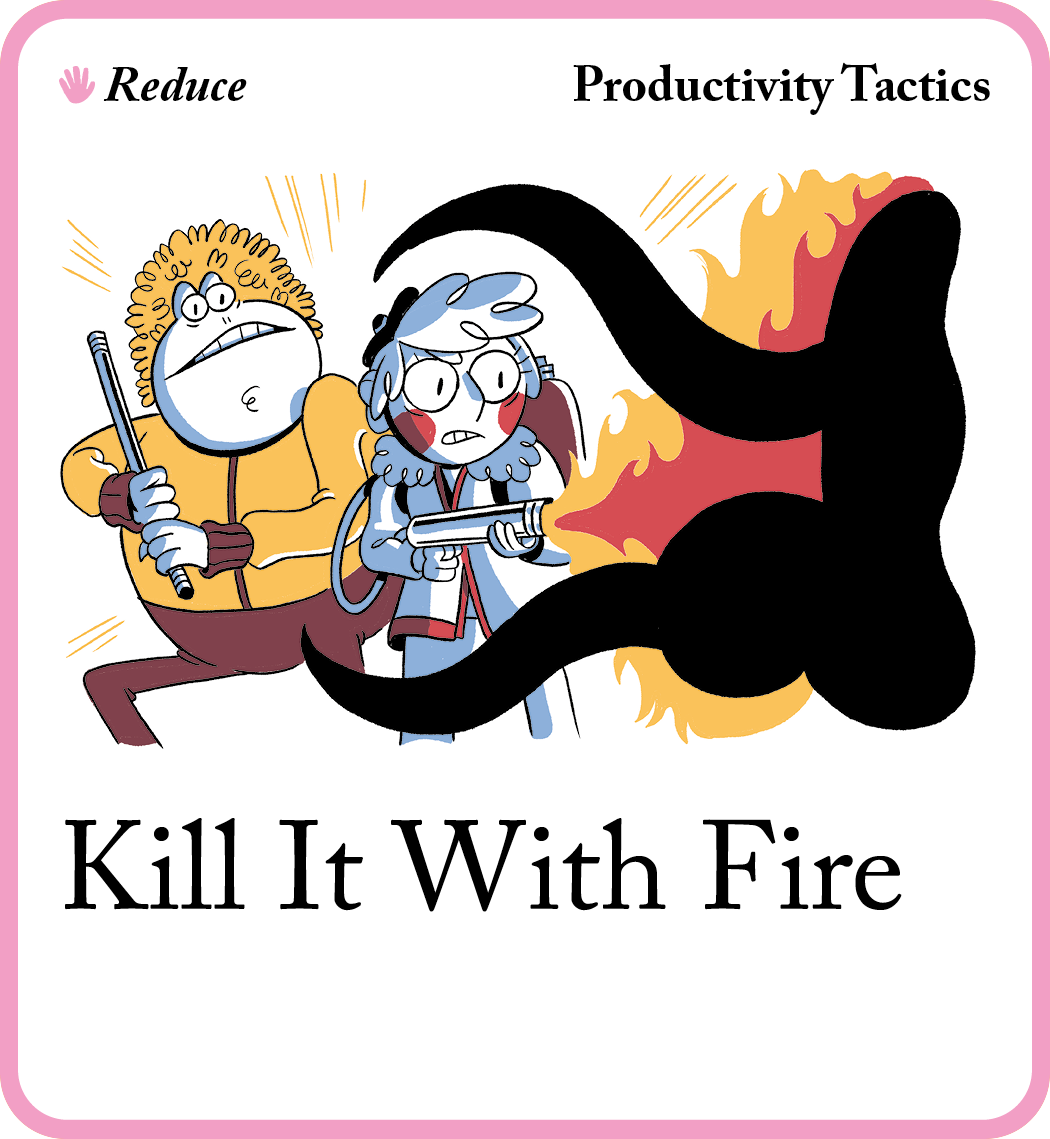
👤 Who is needed? Just you
🧠 What’s the goal? Ruthlessly remove non-essential tasks from your schedule to free up time and headspace for your real priorities.
👀 Why is this important? Discard time-consuming, low-value activities so you can channel your focus and maximise your impact. Use this tactic regularly to ensure there’s always space for deep work in your calendar.
“Focus is about saying no.” – Steve Jobs
💡 Tip: learning to say ‘no’ respectfully is an essential productivity skill. Practise it, and you won’t need this card as often.
Instructions
-
List any new tasks that have recently been added to your schedule that you’re not at least 90% sure will be worth your time. These tasks are from your ‘Forget it’ and ‘Do Later‘ in Impact Effort Map, and also from ‘Concern‘ from Sphere of Influence.

-
Scrutinise each item on your list, and ask yourself:
⬇️ Now that you are done all three tactics, it is time to put your priorities tasks into action!
What ways can I use this recipe?
- The complete loop: this means short, separate sessions for each of the three tactics in order
- Ongoing process: use these tactics regularly and consistently to maintain a great working environment
Some tips
- Practice mindfulness and relaxation techniques. Incorporate mindfulness practices such as deep breathing, meditation, or gentle physical exercises like yoga to calm your mind, reduce stress and enhance your ability to handle overwhelming situations with a clearer perspective.
- Seek support and delegate. Don’t hesitate to reach out to friends, family or colleagues for support, and delegate tasks when possible to lighten your workload, ensuring you also set aside time for adequate rest and activities that bring you joy.
What next?
Congratulations! You have completed a round of How to manage overwhelm! But this is only the start. You have identified all the elements within your influence, prioritised impactful actions requiring minimal input, and created space for yourself by re-evaluating all your current tasks. And now, it is time to put your work into action.

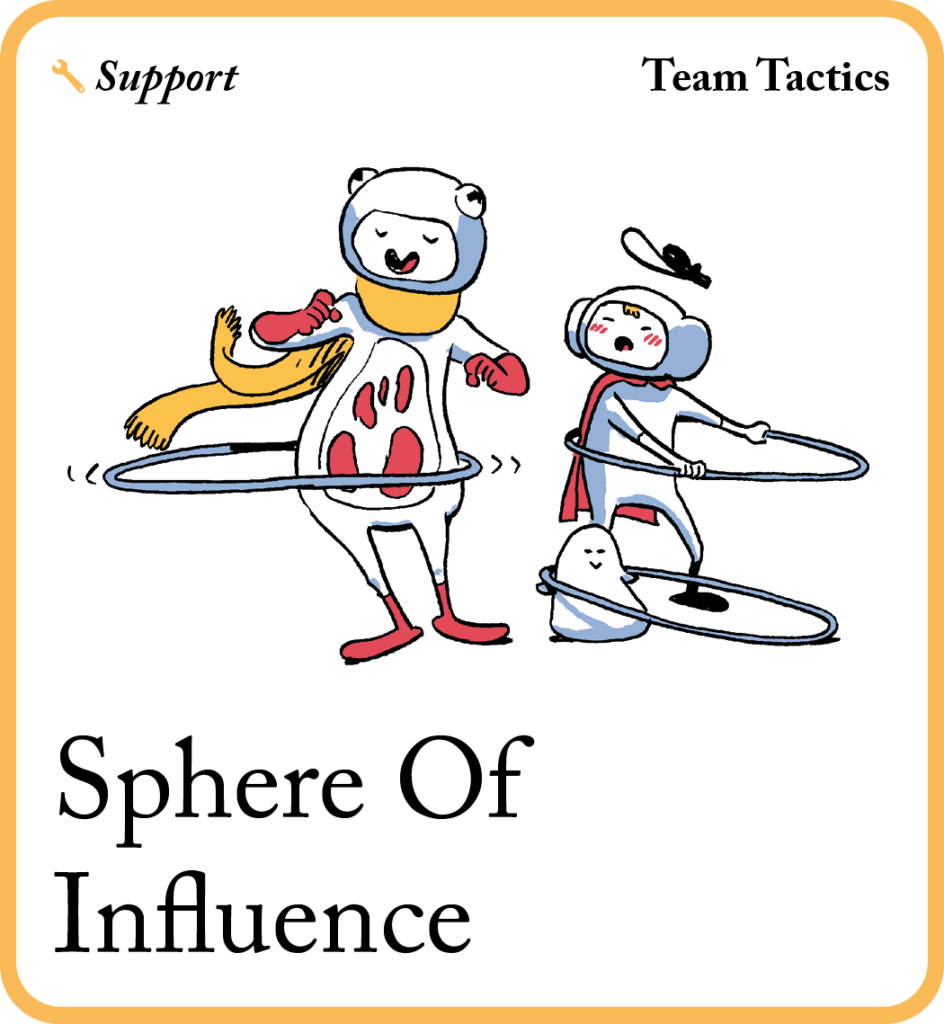
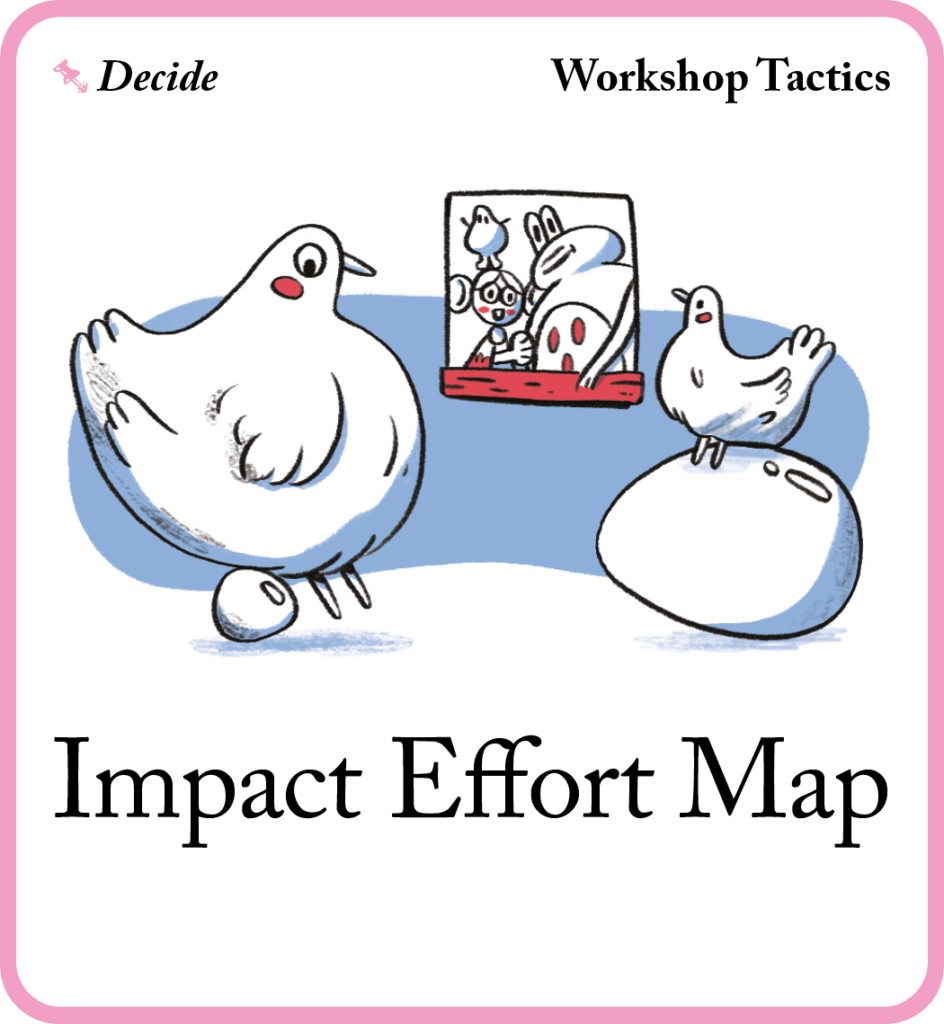
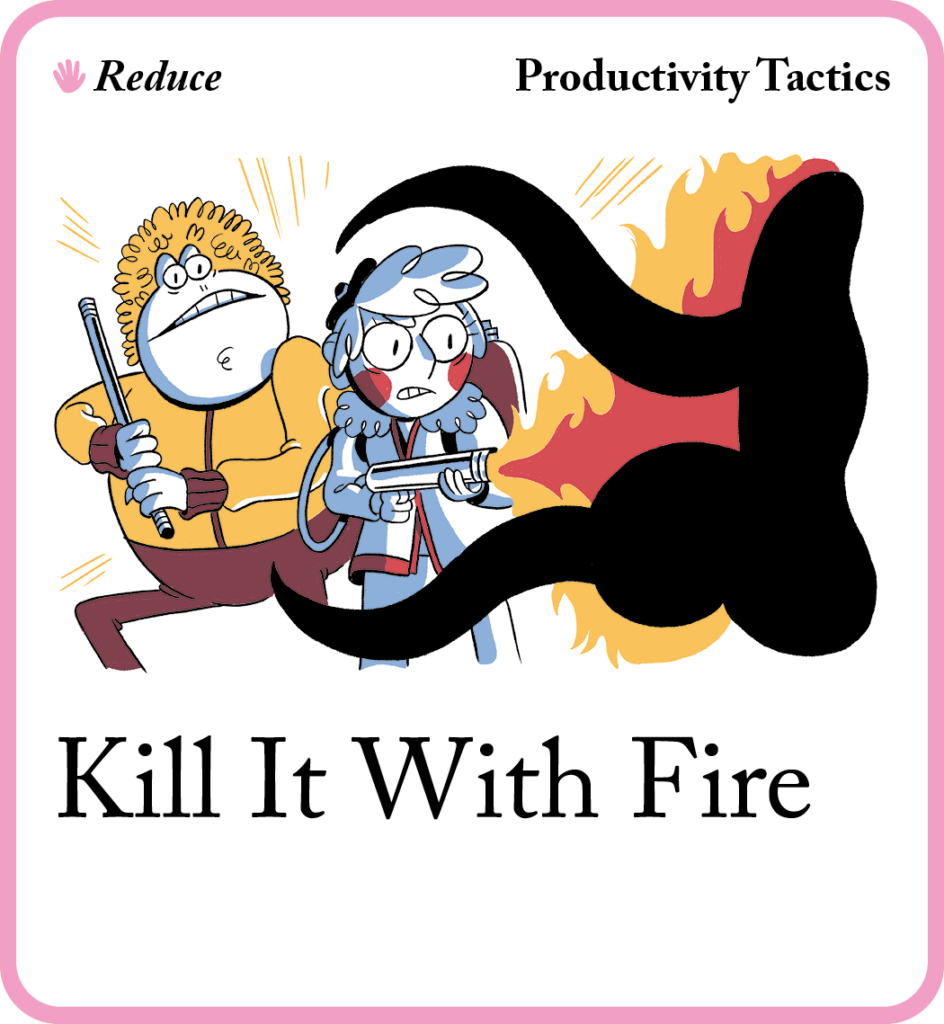
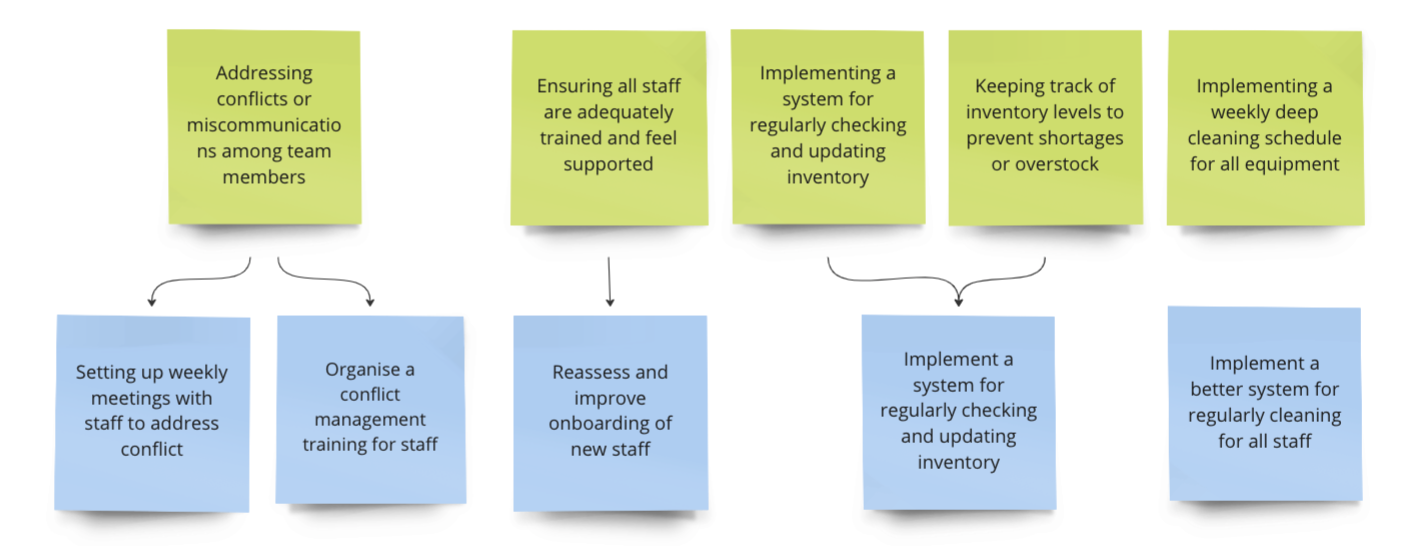
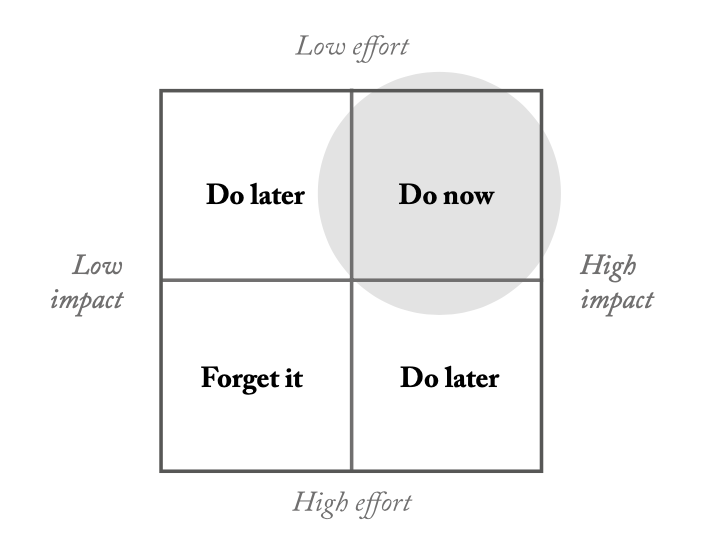




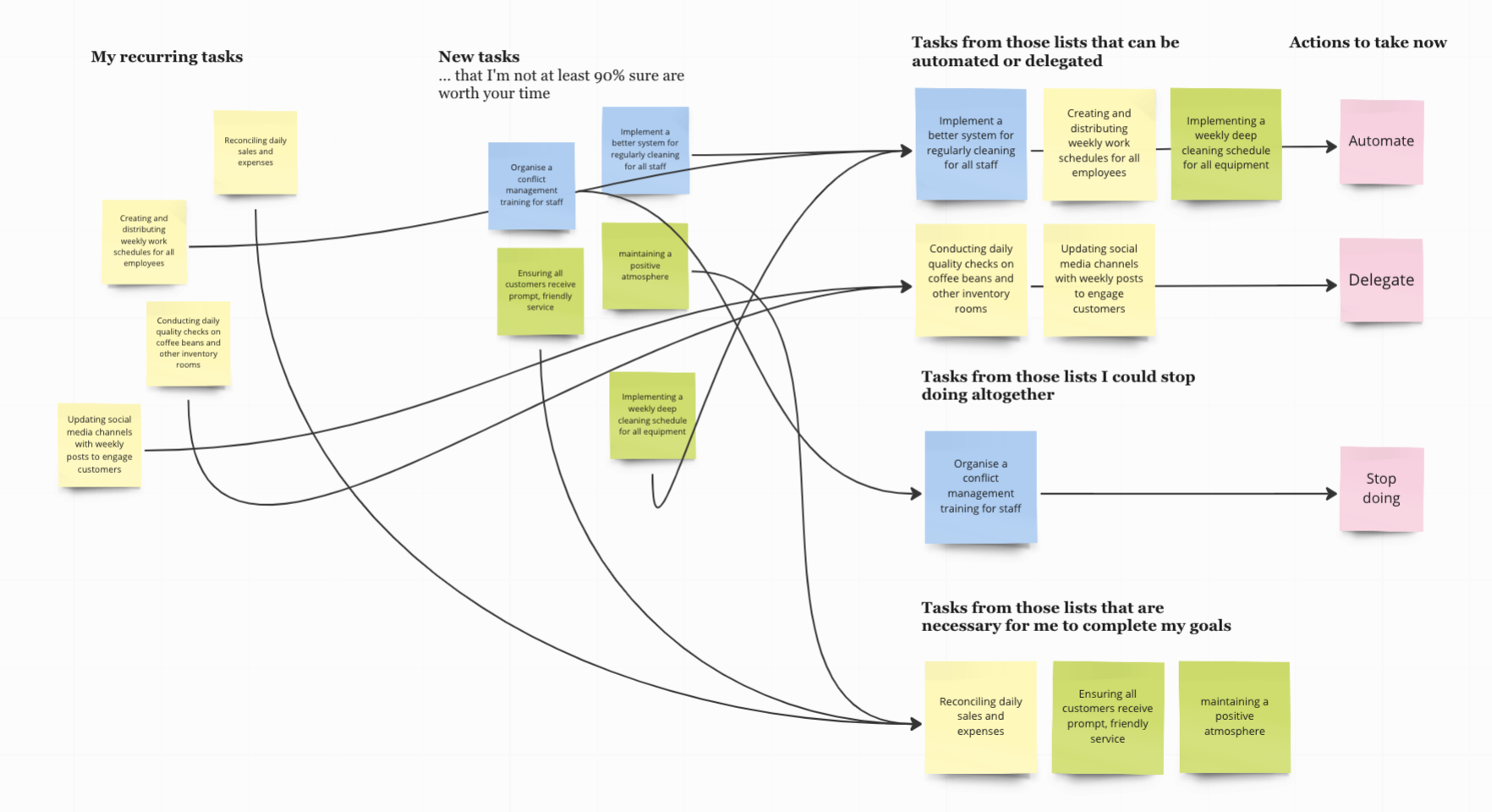
great demo and with worked example
Excellent tips – thanks! We nice framework and approach.